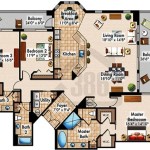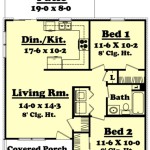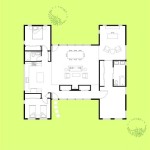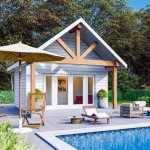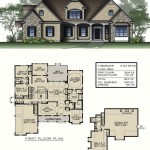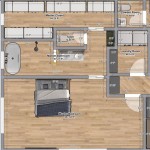Open Floor Plan Interior Design
Open floor plans have become increasingly popular in recent years, offering a spacious and airy feel to homes. By removing walls and creating large, open spaces, open floor plans allow for a more flexible and inviting living environment. However, designing an open floor plan requires careful consideration to ensure a functional and aesthetically pleasing space.
Benefits of Open Floor Plans
- Natural Light: Open floor plans allow for more natural light to enter the home, creating a brighter and more welcoming atmosphere.
- Spaciousness: Removing walls creates a sense of spaciousness, making even small homes feel larger.
- Flexibility: Open floor plans offer greater flexibility for furniture arrangement and allow for multiple uses of the space.
- Improved Communication: With fewer walls separating different areas, communication between family members or guests is easier.
Design Considerations for Open Floor Plans
While open floor plans offer numerous benefits, it's important to carefully consider the following design aspects:
Flow and Circulation:
Ensure a smooth flow of movement between different areas by creating clear pathways and avoiding obstacles. Consider the placement of furniture, rugs, and lighting to guide people through the space.
Definition of Areas:
Even though walls are removed, it's important to define different areas within the open floor plan. This can be achieved through the use of furniture, rugs, changes in flooring, or lighting. For example, a living room area could be defined by a sectional sofa and a rug, while the dining area could be defined by a table and chairs.
Furniture Selection:
Furniture should be carefully chosen to complement the open floor plan. Smaller, more open pieces that allow for sight lines are preferable to large, bulky furniture. Consider the scale and proportions of furniture to ensure it doesn't overwhelm the space.
Lighting:
Lighting plays a vital role in an open floor plan. Use a combination of natural and artificial lighting to create a well-lit space. Consider layering different types of lighting, such as ambient, task, and accent lighting, to enhance the functionality and aesthetics of the space.
Storage:
Incorporating storage into an open floor plan can be challenging. Consider using built-in storage solutions, such as shelves, cabinets, or drawers, to minimize clutter and maintain a clean and organized space.
Height and Volume:
To create a sense of intimacy and coziness in an open floor plan, consider varying the height and volume of different areas. For example, a living room area could have a lower ceiling or a more intimate seating arrangement, while a dining area could have a higher ceiling or a more formal table and chairs.
Conclusion
Open floor plans offer a spacious and inviting living environment, but careful design considerations are essential to ensure functionality and aesthetics. By thoughtfully defining areas, selecting appropriate furniture, maximizing lighting, incorporating storage, and varying the height and volume, open floor plans can be transformed into beautiful and functional spaces.

How To Decorate Your Open Floor Plan Like A Pro Interior Design Home Staging Jacksonville Fl Interiors Revitalized

Filling The Space 8 Interior Design Tips For An Open Floor Plan Fusion Furniture Inc

How You Can Incorporate An Open Concept Floor Plan Into Your Home
:strip_icc()/open-floor-plan-design-ideas-21-rikki-snyder-4-c0012504a6594446932c2893164d3c95.jpeg?strip=all)
22 Open Floor Plan Decorating Ideas Straight From Designers

Pros And Cons Of An Open Concept Floor Plan Generation Homes Nw

30 Gorgeous Open Floor Plan Ideas How To Design Concept Spaces

Simple Design Ideas To Create An Outstanding Open Floor Plan Lita Dirks Co Award Winning Interior And Merchandising Firm

Before After Open Floor Plan Interior Design Refresh Decorilla

The History Of Open Floor Design Interior Designers At Asheville S

On The History And Popularity Of Open Concept Space Plan Urbaneer

